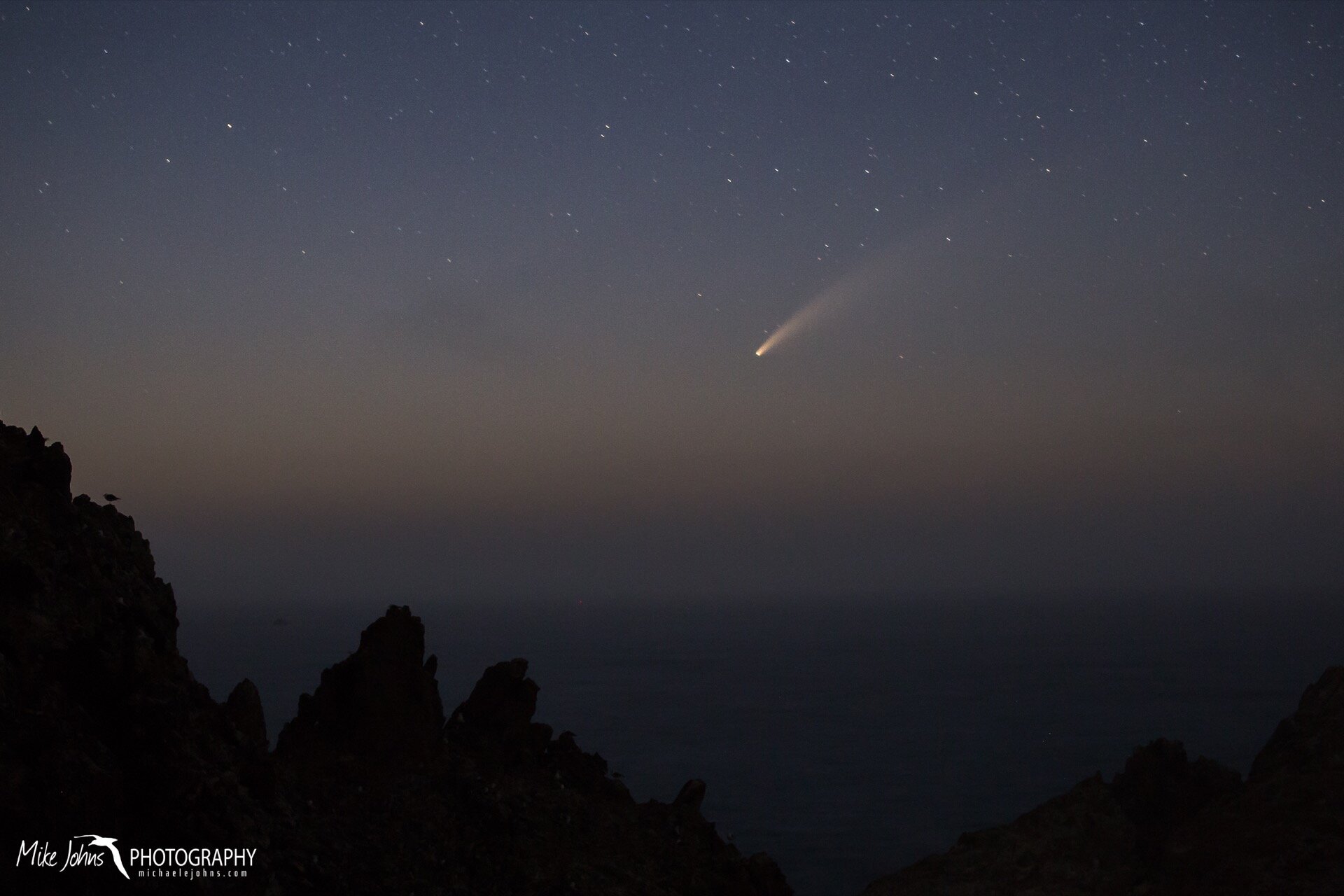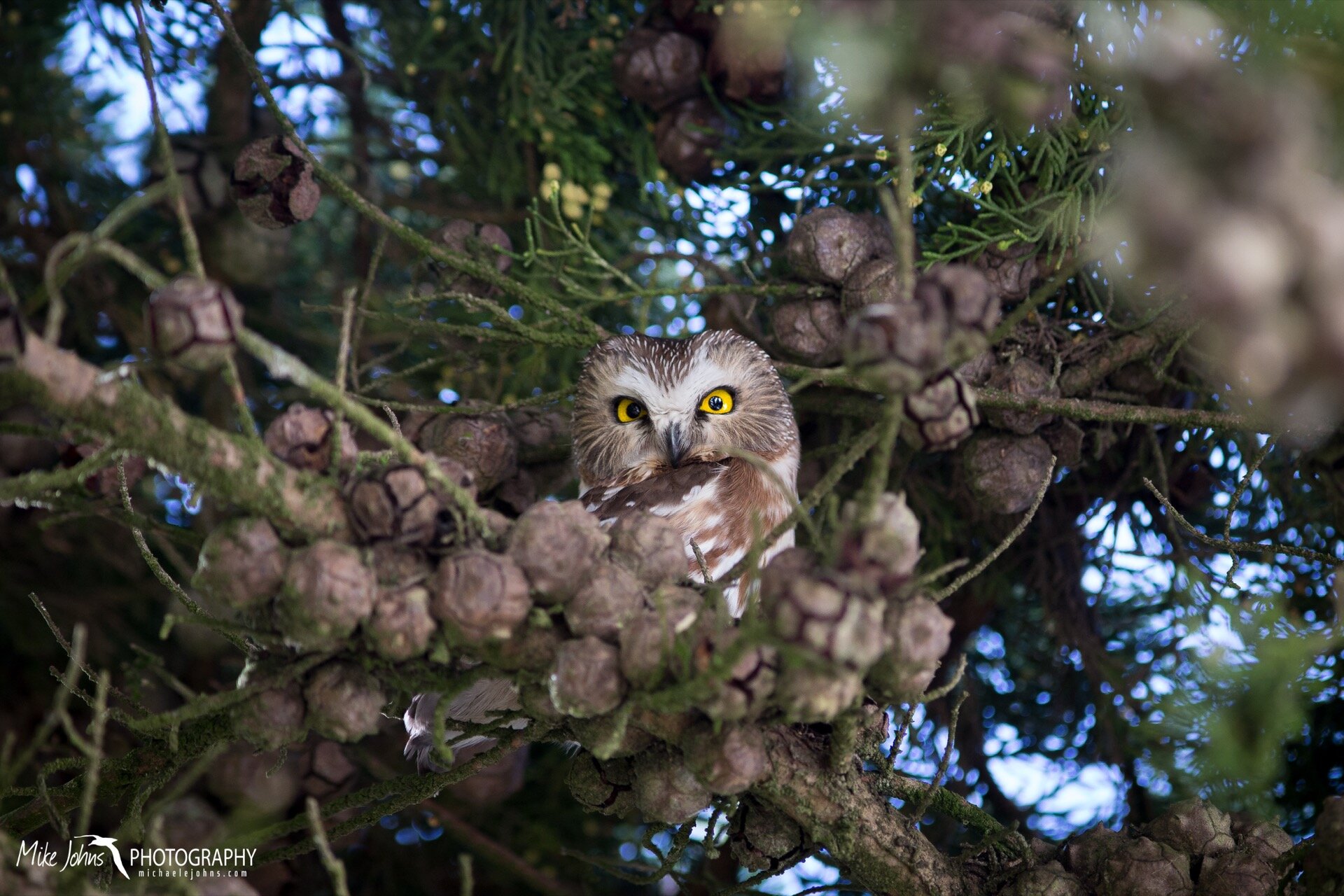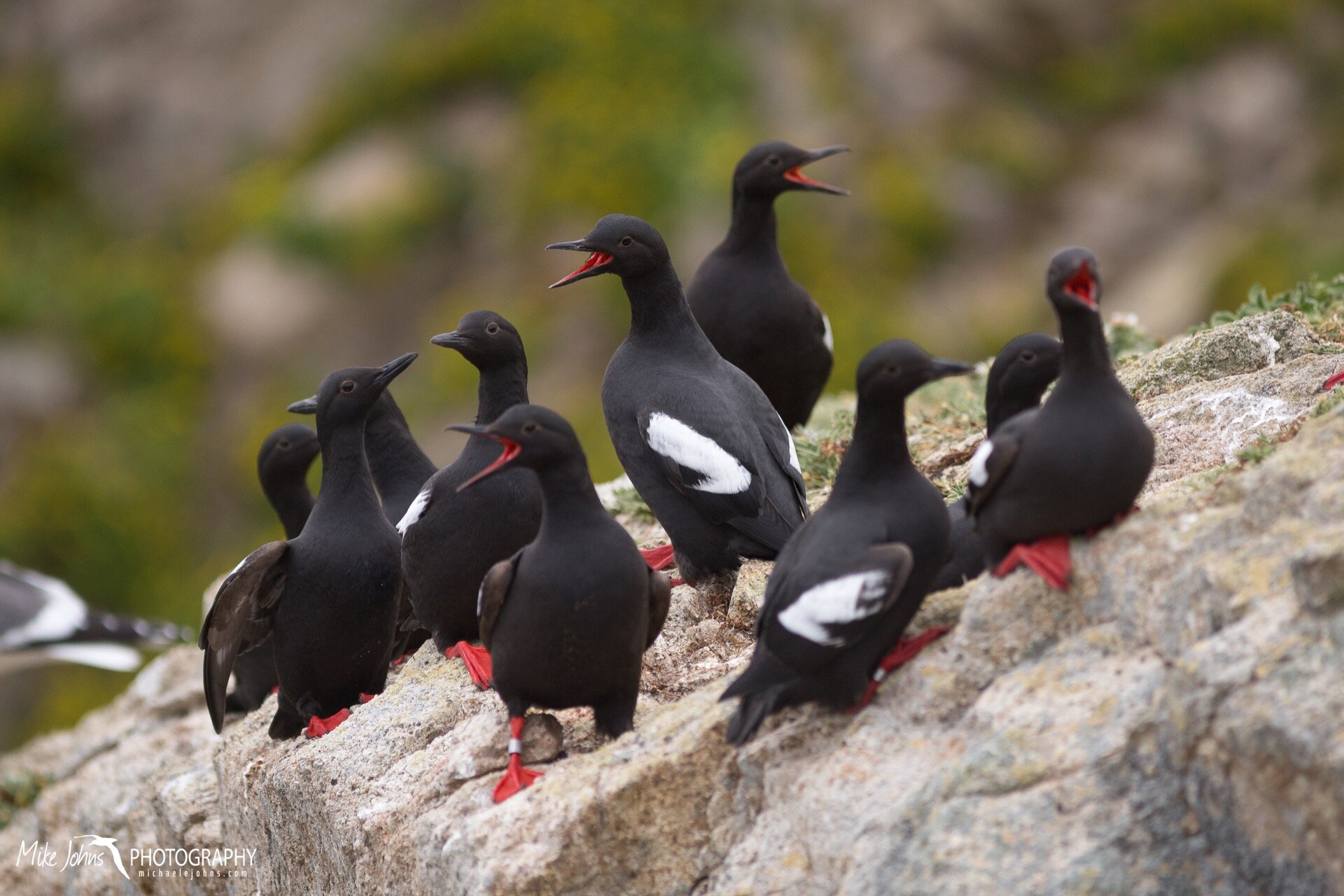I’ve been back from the birds of Southeast Farallon Island for a little over a month now, and I’m just getting around to digging through some of the photos from this season. This was my 6th year on the island, and every year I seem to take a diminishing number of shots. Still, the following series sums up the season pretty well.

Pile of northern elephant seals in Garbage Gulch

Looking down on the colony of common murres on Shubrick Point.

Birds on their morning commute.

Venus setting over Maintop Bay, a rare clear windless night.

Spooky dwellings.

Taking a bill depth measurement of a rhinoceros auklet at the Rabbit Cave Catacombs.

Some of the best sunsets can be found on the Farallones.

Busy banding ashy storm-petrels during a night of mist netting at the Carp Shop.

Releasing a banded storm-petrel with the lights of a sleeping fishing fleet taking shelter for the night.

Morning look at the comet NEOWISE from atop Lighthouse Hill, with gull comets streaking by.

Evening look at the comet NEOWISE setting to the north.

A brief visit from a northern saw-whet owl in the PRBO tree.

A cluster of pigeon guillemots at Garbage Gulch. We call these PIGU parties.
